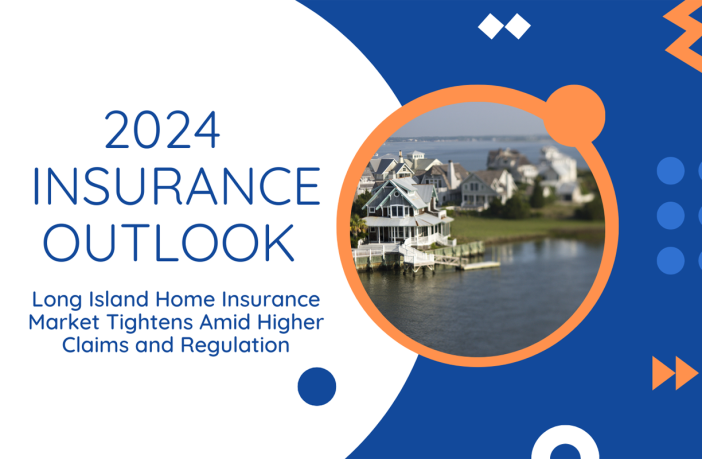While Long Island can be the epicenter of a great many sources of beauty, culture, and fun, there are also some drawbacks to living there as well. Chief among them is the fact that when it comes to living on an island, the possibility of flooding is an everyday fact of life, especially if you live along one of Long Island’s many shore-based communities. With that being said, many local homeowners have found it difficult to procure adequate insurance, and that malady has only increased as time has passed.
However, having the proper coverage is vital when it comes to protecting your home and possessions, and Coastal Insurance of Rocky Point has been in the business of safeguarding their clients since 2001, tirelessly helping them to acquire the best plans for their individual needs and circumstances.
Coastal Insurance CEO David Clausen has been in the industry for over 20 years and brings a wealth of knowledge and experience to the table when it comes to household insurance. Coastal concentrates their business on shoreline residences typically situated in wealthier regions – specializing in luxury or high net worth insurance packages – but they are nonetheless more than able to advise and provide coverage for a variety of dwellings and income levels in both Nassau and Suffolk County.
The dedication that Coastal displays towards their clients is needed now more than ever, with 2023 having been one of the most difficult for those – both on Long Island and across the nation –seeking to get reliable homeowners’ insurance.
In the insurance business, Clausen notes, two key metrics drive the numbers: frequency and severity. Frequency simply refers to how often losses occur, while severity describes the size of those losses in dollars; if either or both measures increase, rates must rise to cover the losses.
Two states that serve as prime examples of this are Florida, with its seasonal hurricane losses, and California, which has been experiencing regular instances of destructive wildfires. Hurricane Ian alone caused an estimated $55 billion in insured losses for Florida citizens, and as a result of natural disasters such as these, residents in affected states have experienced large increases in their insurance premiums as a result.
Meanwhile on Long Island, regular flooding, especially amongst communities located along the shorelines, has also contributed to skyrocketing insurance rates – and in many instances, difficulty in obtaining insurance at all – with some carriers pulling out of heavily-afflicted markets altogether.
However, geographical issues aside, there are some common issues shared by all states in the country that are driving up premiums; for example, the United States is currently experiencing record-high inflation, the likes of which has not been seen to this degree in the past 40 years. The Federal Reserve has been attempting to combat this issue by regularly raising interest rates – with some degree of success – but as a result, insurance rates have been driven up across the board, including homeowners’ insurance.
Also, regulatory issues have been responsible for increased insurance rates and carriers pulling out of certain unprofitable markets as a result; for example, insurance companies in California are required to explain their reasoning for proposed rate increases – and to have those increases receive governmental approval – before they can implement them. However, California law mandates that insurance companies must base their loss data on the previous 20 years, which may not take into account more recent issues such as the current high level of inflation holding the country in its grip. In some instances, it’s better for a carrier to simply cut their losses and leave a market.
And finally, it may surprise you to know that insurers have their own insurance as well – known as reinsurance – which they can fall back on if claim losses are higher than anticipated. But, as with everything else these days, inflation is driving up the cost of reinsurance as well, and sometimes those increases have to be passed down to the customer.
All of the aforementioned issues have resulted in a perfect storm of insurance woes that have made it harder and harder for the average family to make sure that their homestead is properly covered. Rates are going up; some carriers are pulling out of certain zip codes and states or engaging in more stringent underwriting; coverage is sometimes delayed; some carriers are requiring policies to be paid in full before offering coverage or limiting coverage saturation in certain areas; and some are declining to renew policies of customers in high-risk areas.
While this may sound like unrelenting gloom and doom for Long Island homeowners, the experts at Coastal Insurance have compiled a series of tips that people can utilize to help find coverage they need to ensure that their homes and belongings are protected should the worst ever happen:
- Check your insurance options before buying or selling a home.
- Discuss planned renovations with your agent. Renovations can change the risk profile of a property.
- Ensure your property is well-kept and free of debris. Tend to trees and bushes near your home. Insurers are looking for risks. In wildfire areas, keep your home clear of fuel for fires, such as bark, branches, and leaves.
- Remind your agent about the safety features that your home has, especially if it will help mitigate catastrophic damage.
- Consider upgrades, like storm-proof or fire-resistant materials.
- Consider roof replacement. If your roof is older, have it inspected and take steps to replace the roofing if needed. Non-renewals due to roof wear are common in the industry.
- Pay on time. Many policies use mortgage escrow to pay insurance premiums. If you’re paying your premiums directly, consider paying online and paying early so you have time to fix the issue if a payment didn’t go through.
- Discuss risk management options with your agent. There may be some steps you can take that are specific to your property.
Coastal Insurance CEO David Clausen notes that he and his great team have enjoyed a great deal of satisfaction out of finding effective insurance for the right price for his many clients over the years, especially when they needed them the most during the aftermath of Hurricane Sandy in 2012.
“I’m a proud Long Islander, and being in the coastal insurance industry during Sandy was traumatic. Our office had no power, but the phones still worked so we sat in the dark taking claims on paper. We had agents whose houses were under water as well,” he said. “The job of an agent is not to collect premiums, but to be there when someone is in trouble…that’s when your agent becomes valuable, during a catastrophic event like Sandy. It’s so rewarding to help someone in need.”
For more information, please visit coastalinsurancesolution.com.













